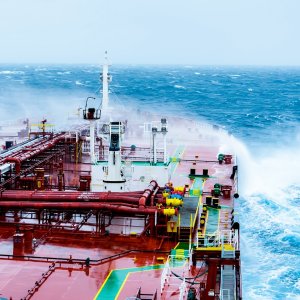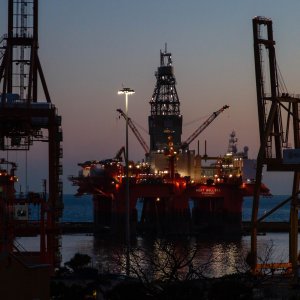Deepwater Progress Creates Positive ROV Demand Outlook
STORY INLINE POST
When compared to the US and other markets, deepwater oil and gas development in Mexico has been very slow. “The first challenge for PEMEX and deepwater focused contractors and suppliers is to break this inertia,” explains Jesus Patiño, Manager, Strategy Development of Oceaneering International, a global oilfield provider of engineered services and products with a focus on deepwater applications. Following the Energy Reform, Patiño estimates that the number of ROV systems the company operates in the country could grow rapidly. Oceaneering’s close collaboration with International Oil Companies (IOCs) in other parts of the world positions the company very well to develop its business with the opening of Mexico’s deepwater segment. “Outside Brazil, our ROVs support more than 50% of the deepwater drilling rigs worldwide. IOCs are aware of our proven performance and quality, and they select us based on our ability to perform a service, followed by technical capabilities and price. Their decision process in Mexico will be no different from that in the rest of the world. I am confident we will be able to claim our share of this market.”
Forced by its tightly regulated purchasing process, PEMEX has a history of procuring low cost products and services. However, given the complexity and scale of deepwater projects, upfront cost becomes secondary to total cost of ownership. Procuring more specialized products, for which performance is critical, PEMEX could benefit from choosing high value over low price. “The new regulations provide for that,” says Patiño, “Deepwater drilling spreads can cost more than US$1 million per day. The ROV services are typically less than 1% of that spread. However, you simply cannot operate without a functional ROV and therefore, uptime is critical. Every minute that a rig cannot operate because of an ROV related problem means thousands of dollars worth of rig and services costs for the operators. Most of our customers are willing to pay a reasonable premium for our services because our better performance reduces the total cost of operations. The same concept applies to other specialized and highly technical areas.”
ROVs in Mexico are expected to be increasingly in demand because they are critical for all deepwater projects. Now that PEMEX is planning to develop Lakach, Patiño feels the industry will pay more attention to how the ROV services are procured. Under the current contracting model, PEMEX hires integrated services and effectively contracts a solution. This means that the entire risk burden lies with the contractor. The general practice in other parts of the world is for the ROV to work directly for the operator. As Patiño explains, “The ROV system is highly complex equipment for which international drilling contractors do not usually assume responsibility. They prefer to exclude the ROV system from the contracts.” Including the ROV in the contracts could appear to be better for PEMEX, as the company does not pay the day rate of the drilling rig if the ROV does experience a breakdown. However, the effect of the logic is reduced competition, as many of the best drilling contractors choose to take their rigs to other geographic locations where contracting does not require them to assume risks they cannot mitigate.
An additional challenge for companies like Oceaneering is the requirement to work as part of an integrated services contract. Oceaneering’s goal is to supply technology directly to operators like PEMEX, rather than as a traditional vendor for EPC contractors. Patiño does not see short-term feasibility for convincing PEMEX to break down contracts any further. Instead, an alternative could be to start working on short projects with limited work scopes rather than large integrated projects. He admits that “in part due to the extra effort required to do business there, Mexico has slipped down the priority list. Oceaneering has many attractive opportunities for business development all over the world.” He also points out that “in Mexico, exploratory drilling is happening in water of depths more than 2,600m, but offshore development is all in shallow water fields. While, there are no producing subsea fields in Mexico, the leap to subsea infrastructure is imminent, as it is the only alternative to develop deeper fields.”
Until now, the ROV work that has been done in Mexico has been limited to drilling support, which involves basic monitoring tasks such as daily visual inspections and some intervention capabilities. However, it is anticipated that Lakach will highlight the importance of ROVs in deepwater as the field moves into the development stage and ROVs take on active roles installing, connecting, and testing trees, umbilicals, and other specialized hardware. Leading hardware suppliers such as Cameron, FMC, GE, and Aker have also entered the market in anticipation of growth. “In other countries, entire subsea processing systems are being installed,” says Patiño. “The size of these systems is sometimes equal to a soccer field. The equipment being installed subsea is larger and heavier, requiring higher powered ROVs and expanded tooling options.”





















